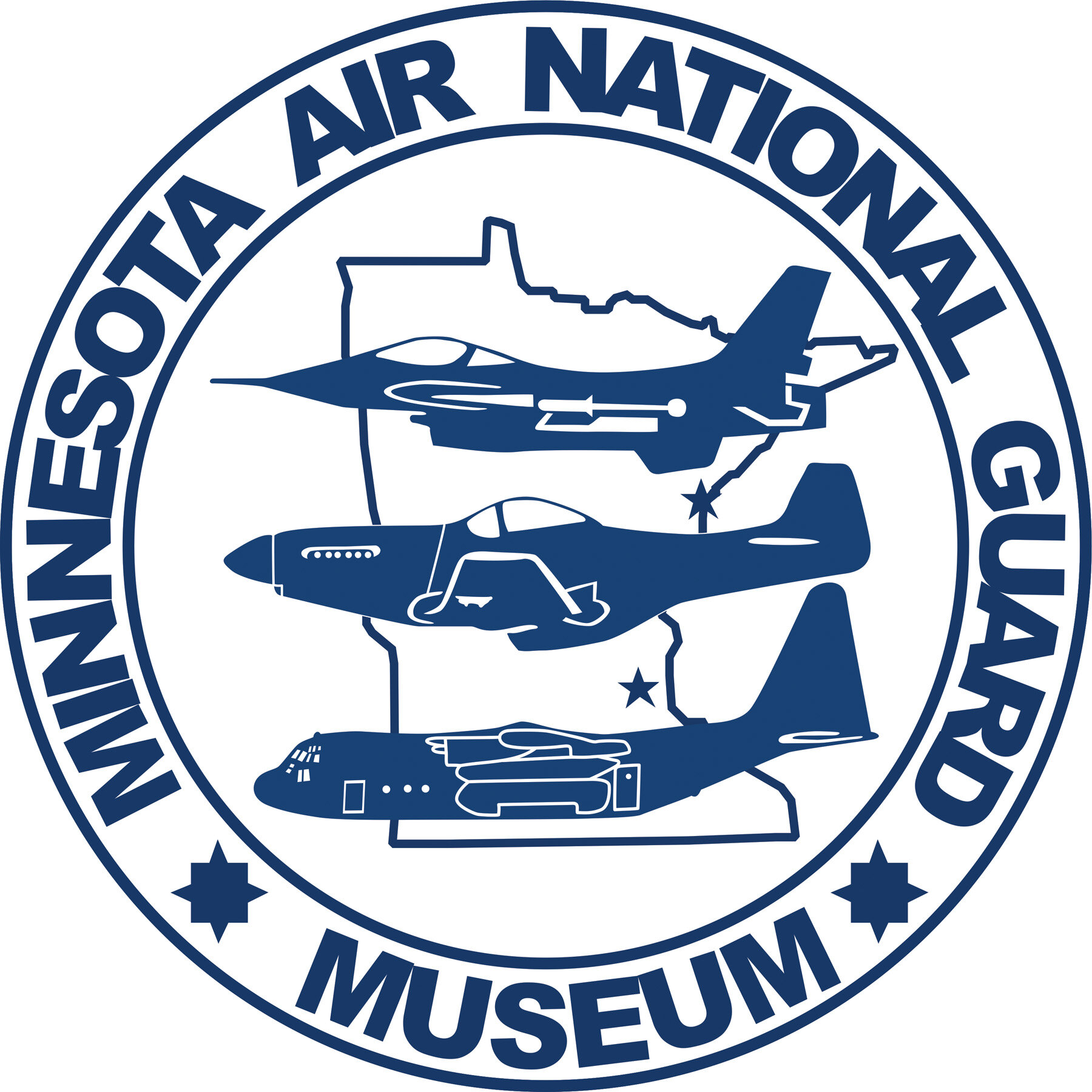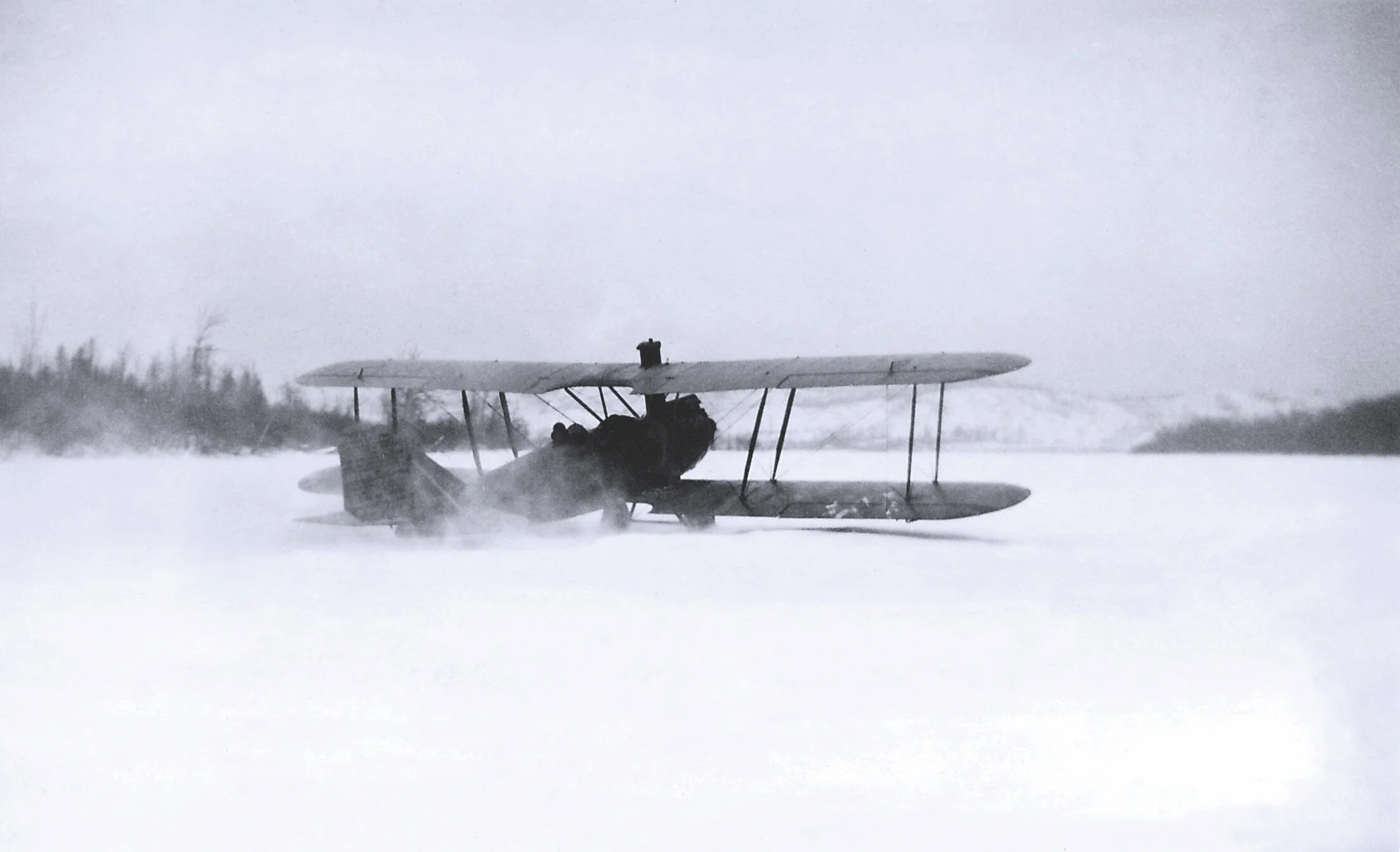Aerial Observation Mission
1921-1943
The Beginning
AN UNPRECEDENTED TRIP
On September 26, three dashing, grinning airmen in leather helmets and goggles took off from Curtiss Field. Authorized by Governor J.A.A. Burnquist, they had rented a Curtiss Oriole plane with an open cockpit. Minnesota Adjutant General Walter Rhinow accompanied Lt Col Garis and the pilot, Captain Miller. They made the seven-day journey in short hops. The nation had few airports and no organized air service. Captain Miller flew at low altitudes. He followed landmarks such as rivers and railroad tracks. The roundabout route included a detour to Buffalo, New York, to visit a friend of General Rhinow. One stopover was across the road from Miller’s parents’ farm in Ohio for a chicken dinner. The only delay was a layover in Poughkeepsie, New York, because of heavy rain. Gen. Rhinow made a choice in rainy Poughkeepsie. Instead of spending more time in the open cockpit, he decided to take a train the rest of the way to Washington, D.C.
“After about an hour and 20 minutes Gen Rhinow asked, and I could scarcely hear him above the roar of the motor, if we were not nearing LaCrosse, and after standing up in my seat and looking about, I nodded assent.”
— Lt Col W.C. Garis
“At Amster Dam we took on just enough gas to carry us to Albany, but we did not reckon with the accommodations which awaited us there, namely, a dearth of gas, and a four hour wait for a new supply to be obtained.”
— Lt Col W.C. Garis
PILOTS NEEDED SIGNIFICANT COURAGE TO NAVIGATE THE UNCHARTED SKIES
The Curtiss Oriole was flown by the 109th Observation Squadron in 1921.
Early air frames were built with fabric, wood and wire, and had cockpits exposing pilots directly to the elements. The elements, at times, so severe that pilots and observers suffered frost bite; the engine noise so loud it nearly prevented communications; and the smells and fumes so pronounced that they created an urgency to get airborne, diluting the near toxic odors. Air traffic control was non-existent and the knowledge of weather and associated hazards very limited. Air worthiness and navigational standards were later directed by the Air Commerce Act of 1926. These factors made aviation in the early1920’s extremely dangerous and unpredictable. Pilots needed significant courage to navigate the uncharted skies, takeoff and land on unprepared fields, and contend with airborne mechanical issues. Captain Miller was that pilot!
A SEVEN-DAY FLIGHT TO BOLLING FIELD, WASHINGTON DC
T. Glenn Harrison, a St. Paul reporter, Captain Miller and Major Garis organized the flying unit in July of 1920. Harrison, due to his writing skills, became the adjutant. The first organized camp was held in Elk River, Minnesota with borrowed equipment from the St. Paul armory. During camp and the days that followed, the three men had numerous discussions with other pilots and mechanics about formalizing the unit. They decided mail correspondence to the Militia Bureau inadequate and a personal visit necessary. A six-day flight to Bolling Field, Washington DC was planned to include press releases and a departure ceremony. On September 26th, 1920, Captain Miller, with General Rhinow and the newly promoted Lt Col Garis in the front seat, departed Curtiss Field (presently the corner of Snelling and Larpenteur in St. Paul), with a rented Curtiss Oriole.
FLIGHTS OF THIS DURATION AND LENGTH, 1,600 MILES, WERE ALMOST UNHEARD OF
Enroute they met large crowds in Lacrosse and Madison, Wisconsin, a very welcoming Miller family in Van Wert Ohio, engine problems in Cleveland Ohio, a significant gas delay in Albany New York, and adverse weather in Poughkeepsie New York, prompting General Rhinow to deplane and take the train to Washington DC.
On the final leg of the route, from Long Island to Washington D.C., Captain Miller and Lt Col Garis encountered a terrific headwind which extended their planned two-hour flight to three hours and 45 minutes.
Many were surprised they completed such a trip without incident.
Already convinced of their success and federal recognition, General Rhinow departed by train to Minneapolis prior to their arrival. Landing at Bolling Field on day seven, Lt Col Garis and Captain Miller were received by the officers of the field with every courtesy and consideration. Many were surprised they completed such a trip without incident. Multi-seat aircraft were essentially 12 years old in 1920 and flights of this duration and length, 1600 miles, were almost unheard of.
Minnesota aviators were revered for their persistence and audacity to get things done
Numerous office visits were made during the course of the next four days. They were often greeted by the words “We heard about you”. Minnesota aviators were revered for their persistence and audacity to get things done. The first day, Sunday, they were greeted and entertained by fellow Minnesotans and then taken to a baseball game with dinner to follow. The following days included meetings with the Chief of the Militia Bureau, General Staff and finally General Billy Mitchell. General Mitchell asked Garis by what training did he get the half wings of an observer? Garis’ response was less than well received as no official wing existed in the table of aviation. General Mitchell then abruptly questioned Captain Miller on his wings, Miller stated “I earned my wings at Love Field sir”. Then he told the General of his flying experiences in WWI. General Mitchell immediately took note and listened to their plan to federally recognize the Minnesota flying unit. Captain Miller pointed out the fact that the unit is already organized but needs airplanes. Garis offered that the air is a natural highway for transportation. An ordinary pasture will do for a landing field, a couple drums of gasoline and a few cans of oil and we have a modern means of commercial transportation.
Given the conviction of Miller and Garis, General Mitchell became a believer in the ability of the states to organize and train functional flying units; General Mitchell, now an advocate, vowed to assist in any way he could!
It would be hard to discover on a more important figure in the development of Minnesota aviation than Raymond Simeon Miller. Besides being the Father of the Minnesota Air Guard, Miller's career with the new Minnesota Aeronautics Commission brought him to the forefront of Minnesota's pioneer licensing and flying rules. [credit: By Noel Allard Minnesota Flyer}
THE 109TH AERO SQUADRON BECAME THE FIRST FEDERALLY RECOGNIZED NATIONAL GUARD FLYING UNIT IN THE COUNTRY
Numerous official engagements crowded the days spent in D.C. With the path to federalization, somewhat paved by General Rhinow, the duo, with the help of Gen. Mitchell, enthusiastically sold the concept of an Air National Guard to military leaders.
For the next three months, 21 officers and 95 enlisted continued to train and organize in anticipation of federal recognition. U.S. Army Maj. Ira A. Rader, chief flying officer for the seventh army corps, inspected the unit for federal recognition. The 109th OS passed with flying colors. The unit received federal recognition on Jan. 17, 1921. After just three and a half months since the visit to the War Department, the 109th OS became the first National Guard aviation unit in the United States to receive federal recognition. [“Century in the Sky”, Minnesota Air National Guard, 2021]
Today, the field is known as the Minneapolis - St. Paul International Airport
In the summer of 1921, the War Department impressed upon the newly formed 109th OS the need for adequate facilities and a proper landing field. The outfit struggled, and despite the lack of an airfield and equipment, they persevered through thick and thin.
Answering the call, the State of Minnesota rented an old race track known as “Speedway Field,” previously known as “Twin City Motor Speedway” or the “Fort Snelling Track” from the “Twin City Aero Corporation.” Three new hangars were constructed at a cost of approximately $50,000.
















